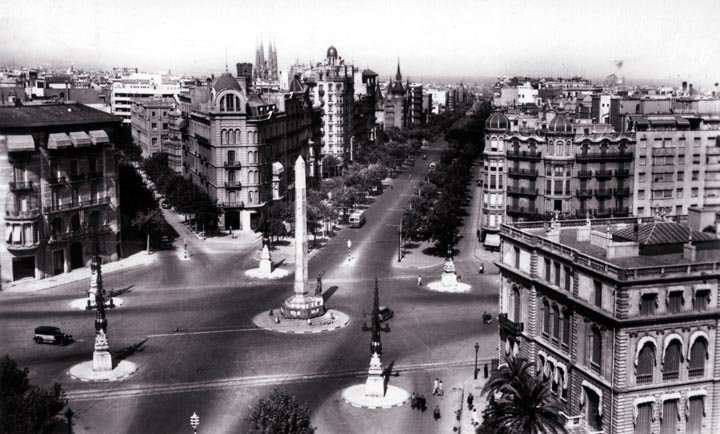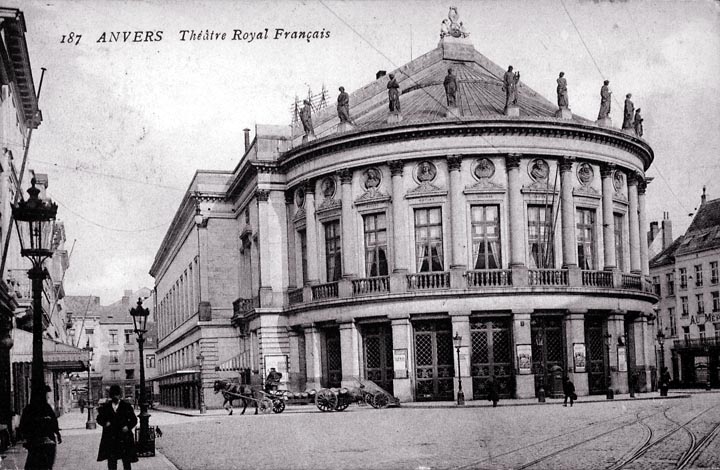
This is a relatively late photograph, probably from around 1930. Although only a few cars and buses are in evidence, they have already managed to stain the pavement black. We can see the circulation patters from the oil stains, and it is evident that most of this square is used for the movement of cars. Pedestrians have been awarded a few islands on which to cower while hoping for a chance to dart through the traffic. This is a pre-war version of a freeway interchange. If this space were entirely reserved for pedestrians, it would almost certainly be much too large. In fact, a successful pedestrianization of this space would probably include the construction of several buildings to fill in the space enough that the remaining space became better enclosed and of a more appropriate size. This is one of the hidden benefits of carfree conversions - a great deal of real estate belonging to the city can be sold off for development. Since this land is very valuable, it will be a large, one-time source of capital, which can be used for the construction of the necessary public transport improvements.
I would be very surprised if the situation today is not much worse than when this photograph was taken.
|
 Next City Design Home
E-mail |